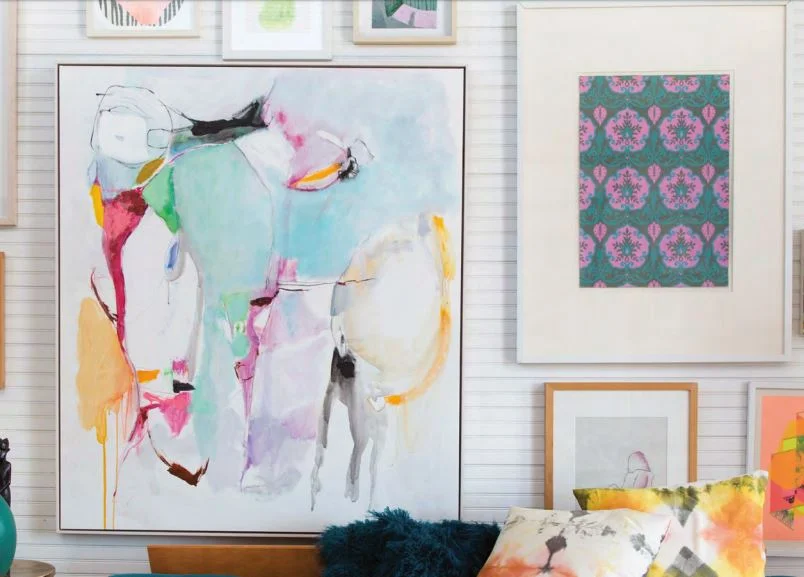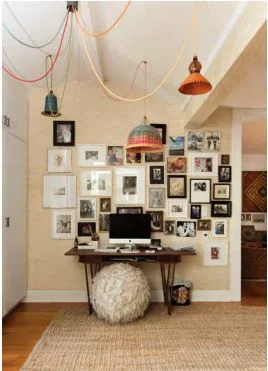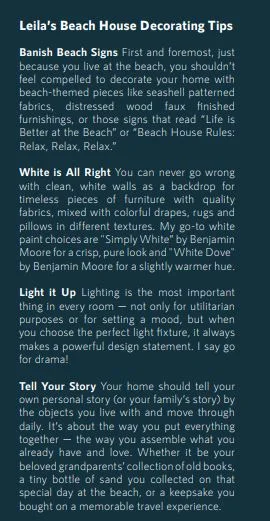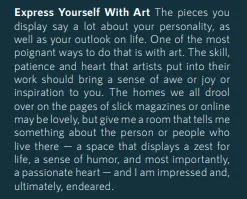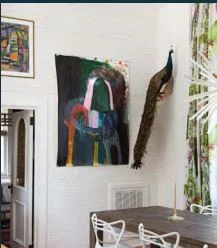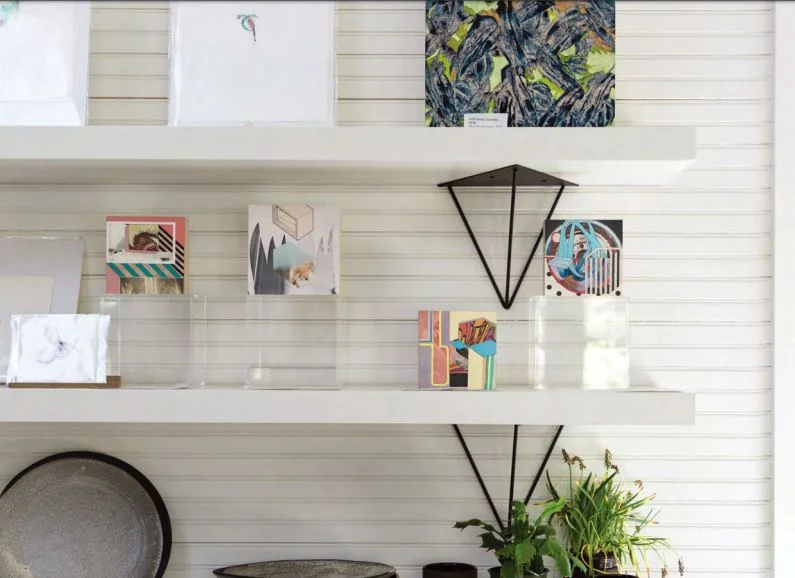Placing The Why On The Walls
At home with gallery owner Leila Ross. By Holly Fisher Photos by Minette Hand
Leila Ross looks at a piece of art and sees beyond paint, sculpture or textures. She sees the story behind the canvas and is eager to share it in her gallery, Show and Tell Art and Design, a carefully curated collection of artworks available online and in Ross’ home on Sullivan’s Island.
The house is part beach cottage, part family home and all art gallery with works of various shapes and sizes vying for attention on the walls of every room. Mingled in with the artwork for sale are childhood drawings and a lifetime of family memories — everything from chubby-cheeked babies and wedding pictures to black and white snapshots and a 1927 senior class photo.
Everywhere stories hang on the walls.
Getting to the ‘why’
In most galleries, a piece of artwork is positioned against a stark, white wall. Gallerists can quickly recite details about the artists — education, awards, artistic style — but they don’t share what the artists were thinking when they created the pieces. “If I’m going to shell out a decent amount of money, I have to fall in love with the human being who made it as much as I fall in love with the piece itself,” Ross says.
For her, it’s about creating an emotional connection for her art buyers, helping them unearth the story behind the art and the artist. “I love that psychological piece of why you do what you do,” she says. “What were you thinking when you made this?”
She interviews each artist featured in her gallery, asking them a series of probing questions to get at that backstory, the “why” that led them to create a piece of artwork.
An eye for what’s good
Ross’ own artistic “why” started at an early age. She was always creative but didn’t have the patience to develop the skills she needed to truly hone her craft as an artist. Still, she still had an eye for art. “I know good stuff when I see it,” she says.
Her story starts in her native Louisiana where she grew up in a farm town of 900. Armed with an American Studies degree from Tulane University, Ross began working at a gallery on Magazine Street in New Orleans. Moving up the ranks to gallery director, Ross eventually burned out on the job and decided she wanted to do something more impactful with her life.
She came to the College of Charleston to pursue a master’s degree in teaching. She also met her future husband, Bu‑ Ross, here. In true, “it’s a small world” fashion, their grandparents knew each other.
Ross became a teacher, passionate about literacy and helping children learn to read. She worked in the Mission District of San Francisco, before returning to the Charleston area. Ross taught for about five years and then, when her first son was born, stayed home with him. After the birth of her second son, Ross began to miss the art world.
In 2012, she started toying with the idea of opening her own gallery, and she and Bu‑ began to explore possible locations in downtown Charleston. She wanted a space that would feature emergent, contemporary art — an artistic hole in Charleston’s art gallery world at that time, Ross says.
She crunched the numbers and knew she would need to move a lot of artwork to maintain a financially viable gallery. Charleston’s significant tourism market would support the beach scenes and Lowcountry landscapes, but Ross wasn’t sure about the demand for a more contemporary artistic style.
Opening a gallery just didn’t make financial sense. But an online gallery gave Ross the opportunity to showcase the kind of artwork she loves without the high cost of a brick-and-mortar gallery. In 2014, she launched Show and Tell Art and Design online.
Art ‘pops up’ on Sullivan’s
The online gallery is much more than a collection of photographs letting potential buyers know what’s for sale. Ross is telling the stories of the artists and building that emotional connection among artwork, artist and collector.
Each artist’s page has a lengthy Q&A in which artists answer such questions as: Why do you do what you do? What makes you cry? What annoys you? What’s on your bedside table? If you weren’t making art, what would you be doing?
Not long after launching her online gallery, Ross and her husband renovated their Sullivan’s Island home — which Bu‑ ’s parents had purchased in the 1970s and where he grew up. They added a family room and spacious kitchen and dining area. With all the extra wall space, Ross decided to fill it with artwork and then host pop-up showings in her home. She also accepts customers by appointment.
Large colorful abstracts, pottery, sculptures and collages fill the walls — green dots mark items for sale, red dots indicate what’s sold, and everything else belongs to Ross and her family. Sometimes she takes artwork on the road, hosting pop-up shops at other locations around Charleston. And about half her sales come from her Instagram account (@showandtellartanddesign).
But she knows the story behind every piece hanging on her wall — whether it’s one for sale or a self-portrait her son made at age 4. Ross points to a favorite piece — a large painting in her second-floor bedroom created from a photo of her two young sons, now ages 9 and 13.
When her boys were younger, they would bathe in their parents’ bathroom and then crawl onto the bed in their shorts or underwear, playing with the dog or just being silly as little boys do, Ross says. A snapshot captured the two from the neck down lying on the bed. Artist Karen Ann Myers turned it into a painting. To anyone else, it might seem an odd configuration. But Ross looks at the painting and is transported to a special time, the kind of memory mothers cherish. She smells the bathwater. She hears her sons’ laughter. “It was just a sweet little moment,” she says.
And that’s why knowing the story behind the art makes all the difference.

